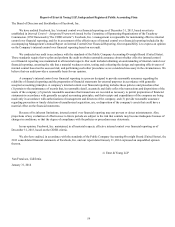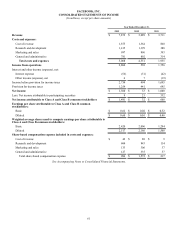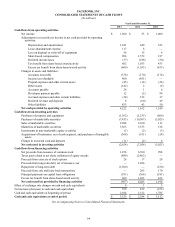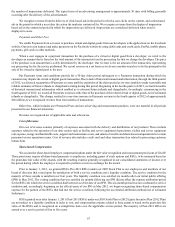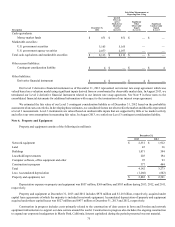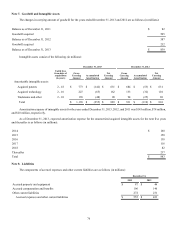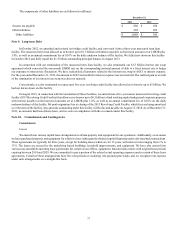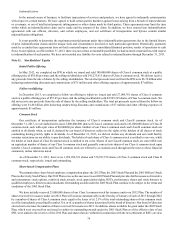Facebook 2013 Annual Report Download - page 71
Download and view the complete annual report
Please find page 71 of the 2013 Facebook annual report below. You can navigate through the pages in the report by either clicking on the pages listed below, or by using the keyword search tool below to find specific information within the annual report.
69
Fair Value of Financial Instruments
We apply fair value accounting for all financial assets and liabilities and non-financial assets and liabilities that are recognized or
disclosed at fair value in the financial statements on a recurring basis. We define fair value as the price that would be received from selling
an asset or paid to transfer a liability in an orderly transaction between market participants at the measurement date. When determining
the fair value measurements for assets and liabilities, which are required to be recorded at fair value, we consider the principal or most
advantageous market in which we would transact and the market-based risk measurements or assumptions that market participants would
use in pricing the asset or liability, such as risks inherent in valuation techniques, transfer restrictions and credit risk. Fair value is estimated
by applying the following hierarchy, which prioritizes the inputs used to measure fair value into three levels and bases the categorization
within the hierarchy upon the lowest level of input that is available and significant to the fair value measurement:
Level 1-Quoted prices in active markets for identical assets or liabilities.
Level 2-Observable inputs other than quoted prices in active markets for identical assets and liabilities, quoted prices for identical
or similar assets or liabilities in inactive markets, or other inputs that are observable or can be corroborated by observable market data
for substantially the full term of the assets or liabilities.
Level 3-Inputs that are generally unobservable and typically reflect management's estimate of assumptions that market participants
would use in pricing the asset or liability.
Our valuation techniques used to measure the fair value of money market funds and marketable debt securities were derived from
quoted prices in active markets for identical assets or liabilities and our valuation technique used to measure the fair value of our derivative
instrument was based on a model-driven valuation using significant inputs derived from or corroborated by observable market data.
Accounts Receivable and Allowance for Doubtful Accounts
Accounts receivable are recorded and carried at the original invoiced amount less an allowance for any potential uncollectible
amounts. We make estimates for the allowance for doubtful accounts based upon our assessment of various factors, including
historical experience, the age of the accounts receivable balances, credit quality of our customers, current economic conditions, and
other factors that may affect customers' ability to pay.
Property and Equipment
Property and equipment, which includes amounts recorded under capital leases, are stated at cost less accumulated depreciation.
Depreciation is computed using the straight-line method over the estimated useful lives of the assets or the remaining lease term, in the
case of a capital lease, whichever is shorter.
The estimated useful lives of property and equipment are described below:
Property and Equipment Useful Life
Network equipment Three to five years
Buildings 15 to 20 years
Computer software, office equipment and other Three to five years
Leased equipment and leasehold improvements Lesser of estimated useful life or remaining lease term
Land and assets held within construction in progress are not depreciated. Construction in progress is related to the construction or
development of property and equipment that have not yet been placed in service for their intended use.
The cost of maintenance and repairs is expensed as incurred. When assets are retired or otherwise disposed of, the cost and related
accumulated depreciation are removed from their respective accounts, and any gain or loss on such sale or disposal is reflected in income
from operations.
Lease Obligations
We lease office space, data centers, and equipment under non-cancelable capital and operating leases with various expiration dates
through 2029. Certain of the operating lease agreements contain rent holidays, rent escalation provisions, and purchase options. Rent
holidays and rent escalation provisions are considered in determining the straight-line rent expense to be recorded over the lease term.
The lease term begins on the date of initial possession of the leased property for purposes of recognizing lease expense on a straight-line
basis over the term of the lease. We do not assume renewals in our determination of the lease term unless the renewals are deemed to be
reasonably assured at lease inception.


